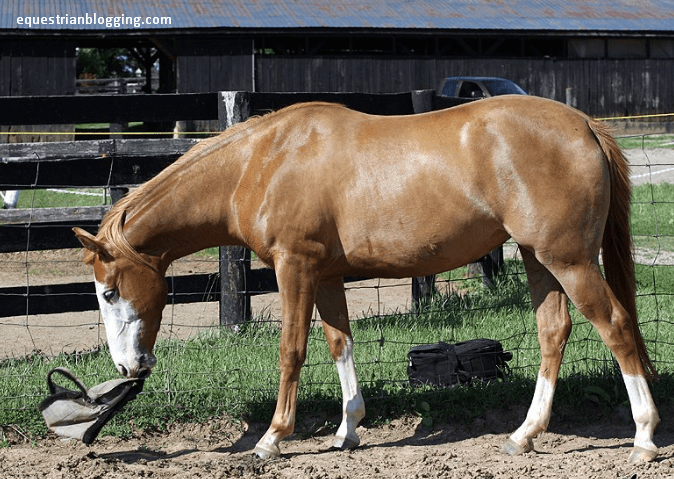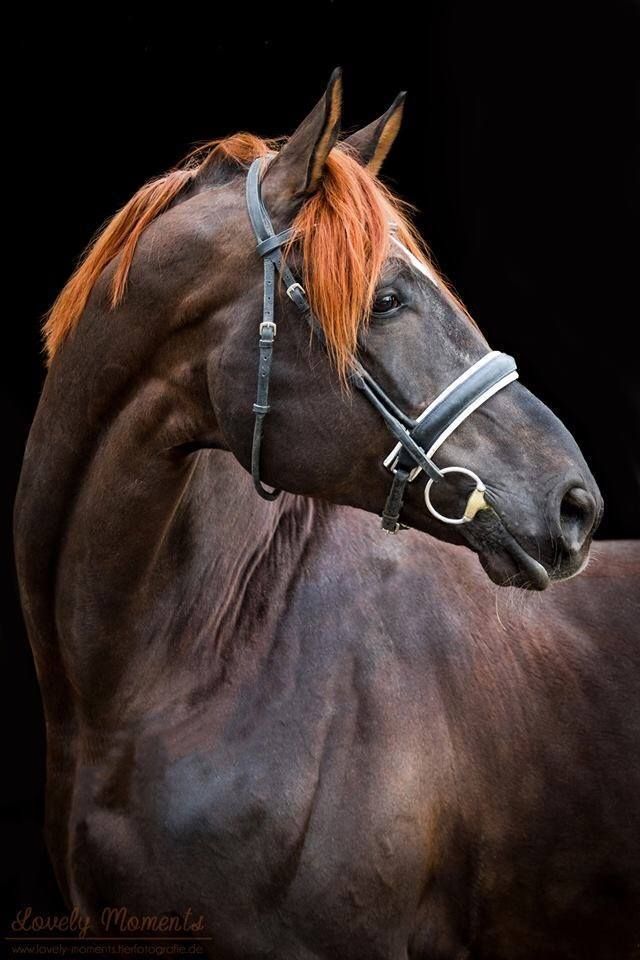A flaxen chestnut horse is a chestnut-colored horse with a genetic trait that causes their mane and tail to be noticeably lighter in color, often a golden blonde shade. This coloration is known as “flaxen” and can also include a mixture of darker and lighter hairs.
Certain horse breeds, such as the Haflinger, are known for having flaxen chestnut coloration as a breed trait. Flaxen chestnuts are different from sorrels as sorrels have an entirely red base color, while chestnuts can have brown or liver tints.
Additionally, flaxen chestnuts are different from palominos as the flaxen gene lightens the mane of chestnuts, while palominos have a cream gene that works on a chestnut coat. Chestnut horses are fairly common in many breeds, although there are no breeds with exclusively chestnut coats.

Distinguishing Features
The distinguishing feature of a Flaxen Chestnut Horse lies in its mane and tail, which are notably lighter than its body coat color, showcasing a golden blonde shade. Certain breeds like the Haflinger exhibit this unique flaxen chestnut coloration as a distinctive trait.
A Flaxen Chestnut Horse is a beautiful and unique equine that stands out from the rest. It is characterized by its distinct features, which set it apart from other horses. These distinguishing features include the mane and tail color and specific breed traits.
Mane And Tail Color
The mane and tail color of a Flaxen Chestnut Horse is what truly sets it apart. Unlike other chestnut-colored horses, the mane and tail of a flaxen chestnut horse are noticeably lighter in color. The golden blonde shade of the mane and tail gives the horse an exquisite and eye-catching appearance.
The flaxen coloration of the mane and tail can vary, with some horses having a consistent lighter hue throughout, while others may feature a mixture of darker and lighter hairs. This unique combination further enhances the overall beauty of the horse.
Breed Traits
While the flaxen chestnut color can occur in various horse breeds, it is particularly associated with certain breeds, such as the Haflinger. The Haflinger breed is known for its striking flaxen chestnut coat and is often admired for its elegance and grace.
In addition to the flaxen chestnut color, Haflingers possess other breed-specific traits that contribute to their overall appeal. These include a compact and muscular body, a refined head with expressive eyes, and a gentle and friendly temperament.
Other horse breeds may also exhibit the flaxen chestnut color as a result of genetic variations. However, it is the distinct combination of the flaxen mane and tail with the chestnut coat that truly makes these horses stand out.
Comparisons
In this section, we will explore the comparisons between Flaxen Chestnut and other similar coat colors, including Sorrel and Palomino. These variations in coat color provide interesting insights into the genetics behind different horse breeds.
Flaxen Chestnut Vs. Sorrel
When comparing Flaxen Chestnut and Sorrel horses, one key difference lies in their base color. While Sorrel horses have a solid red base, Flaxen Chestnuts often display brown or ‘liver’ tints in their coats. Additionally, Sorrels can also have flaxen manes and tails, but it’s important not to confuse them with other shades of red. This distinction showcases the unique coloring variations within the chestnut horse family.
Flaxen Chestnut Vs. Palomino
Another interesting comparison exists between Flaxen Chestnut and Palomino horses. Flaxen Chestnut horses possess a recessive gene called ‘flaxen’ that lightens the mane, often resulting in a golden blonde shade. This gene has not been fully identified yet and remains a theory. On the other hand, Palomino horses are the result of the cream gene working on a chestnut coat. This gene produces a coat color ranging from a light, creamy shade to a darker golden hue. Understanding these genetic differences adds depth to the fascinating world of coat colors in horses.
Commonality Of Chestnut Horses
Chestnut horses, including Flaxen Chestnuts, Sorrels, and other chestnut variations, share a common base color of reddish-brown. While chestnut horses are not considered rare, the various shades and genetic variations within the chestnut family contribute to their uniqueness. Exploring the world of chestnut horses reveals the intricate genetics and fascinating coat colors found in different horse breeds.
Cultural Significance
The Flaxen Chestnut horse holds a significant place in various cultures, revered for its remarkable attributes and historical importance. This breed has left a lasting impact on societies throughout history and continues to evoke modern perceptions of fascination and admiration. Understanding the cultural significance of the Flaxen Chestnut horse unveils its legacy and influence.
Historical Context
The historical context of the Flaxen Chestnut horse is rich and diverse, reflecting its association with nobility and strength in numerous ancient civilizations. From its role in war to its significance in agriculture and transportation, this horse has been an integral part of human history, leaving an indelible mark on cultural narratives and traditions.
Modern Perceptions
Modern perceptions of the Flaxen Chestnut horse continue to be shaped by its enduring appeal and distinctive characteristics. With its majestic presence and revered lineage, this horse symbolizes grace, beauty, and resilience, captivating enthusiasts and professionals alike. Its modern significance extends beyond equestrian circles, resonating with a global audience as a symbol of heritage and admiration.
Frequently Asked Questions On Flaxen Chestnut Horse
What Is A Flaxen Chestnut Horse?
A flaxen chestnut horse is a chestnut-colored horse with a noticeably lighter mane and tail, often golden blonde in color.
What Is The Difference Between Flaxen Chestnut And Sorrel?
Flaxen chestnut horses have a lighter mane and tail than their body coat, usually a golden blonde shade. Sorrels have a red base color, while chestnuts are often brown or ‘liver’ tinted. Sorrels can also have flaxen manes and tails, but are a distinct red variant.
What Is The Difference Between Flaxen Chestnut And Palomino?
A flaxen chestnut horse has a lighter mane and tail compared to its body coat color, often in a golden blonde shade. It is a genetic trait found in chestnut-colored horses. On the other hand, palomino horses have a cream gene that lightens the coat to a golden or light yellow color.
How Rare Is A Chestnut Horse?
Chestnut horses are not rare and are fairly common in many horse breeds, often with a reddish-brown coat. Some horses may have a genetic trait called “flaxen,” where their mane and tail are lighter than their body coat, usually a golden blonde shade.
Flaxen chestnut coloration can be seen in certain breeds like the Haflinger.
Conclusion
The breathtaking beauty of a flaxen chestnut horse is truly a sight to behold. With their uniquely lightened manes and tails, this color variant is a striking feature of many horse breeds. Whether they are grazing in a field or galloping through the countryside, flaxen chestnut horses captivate with their distinctive and eye-catching appearance.
Explore the world of these magnificent creatures and delve into their unique genetic traits and characteristics.

